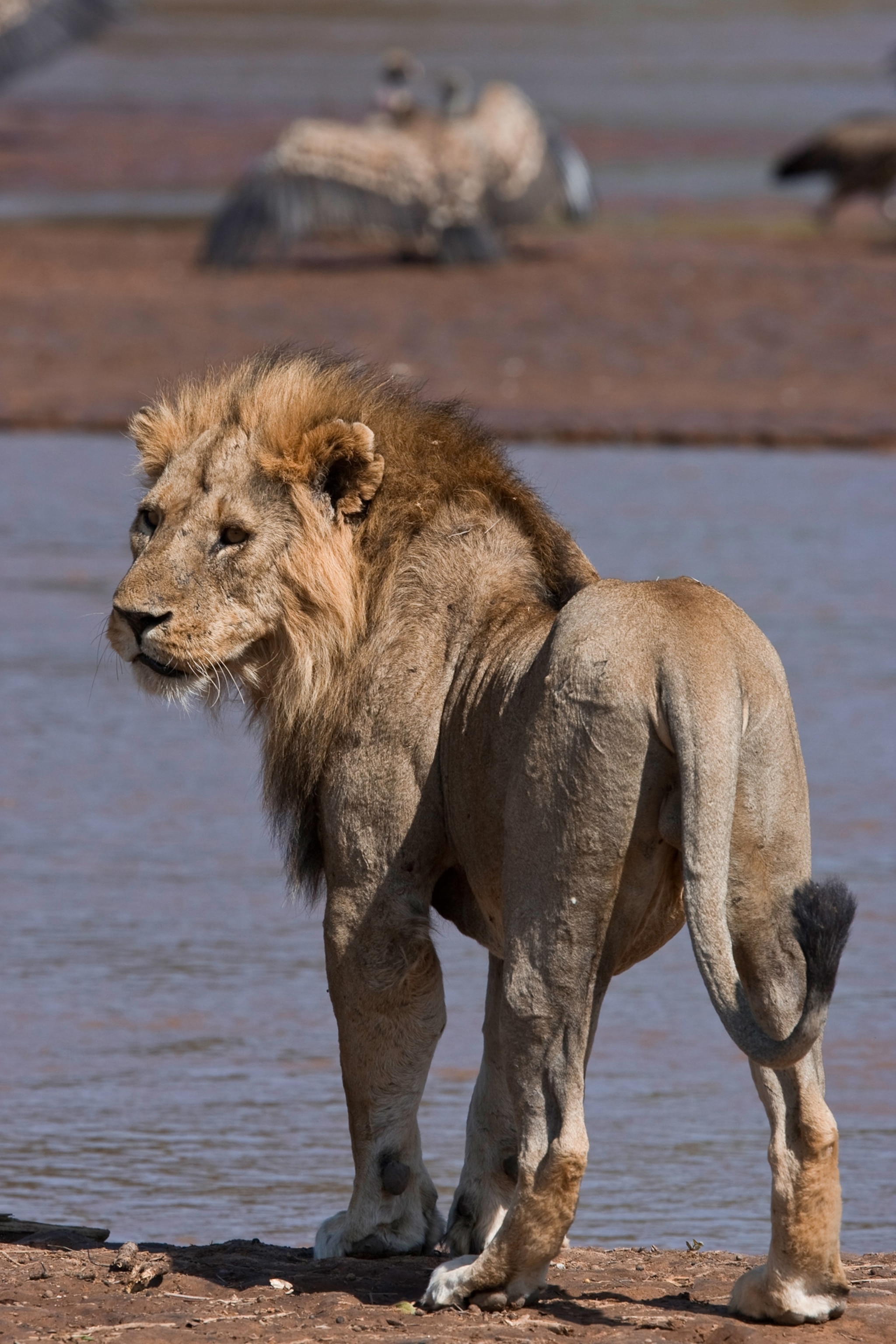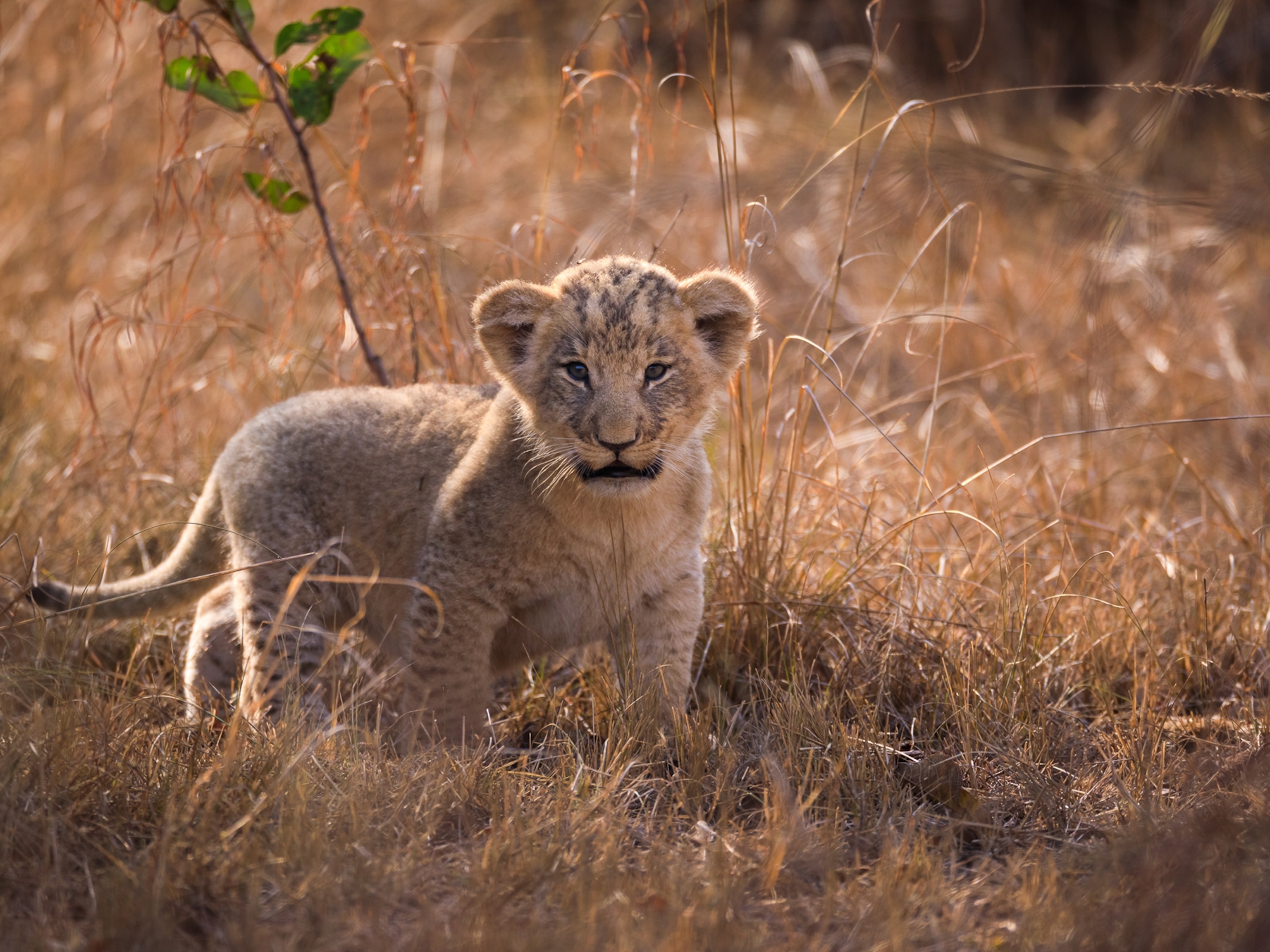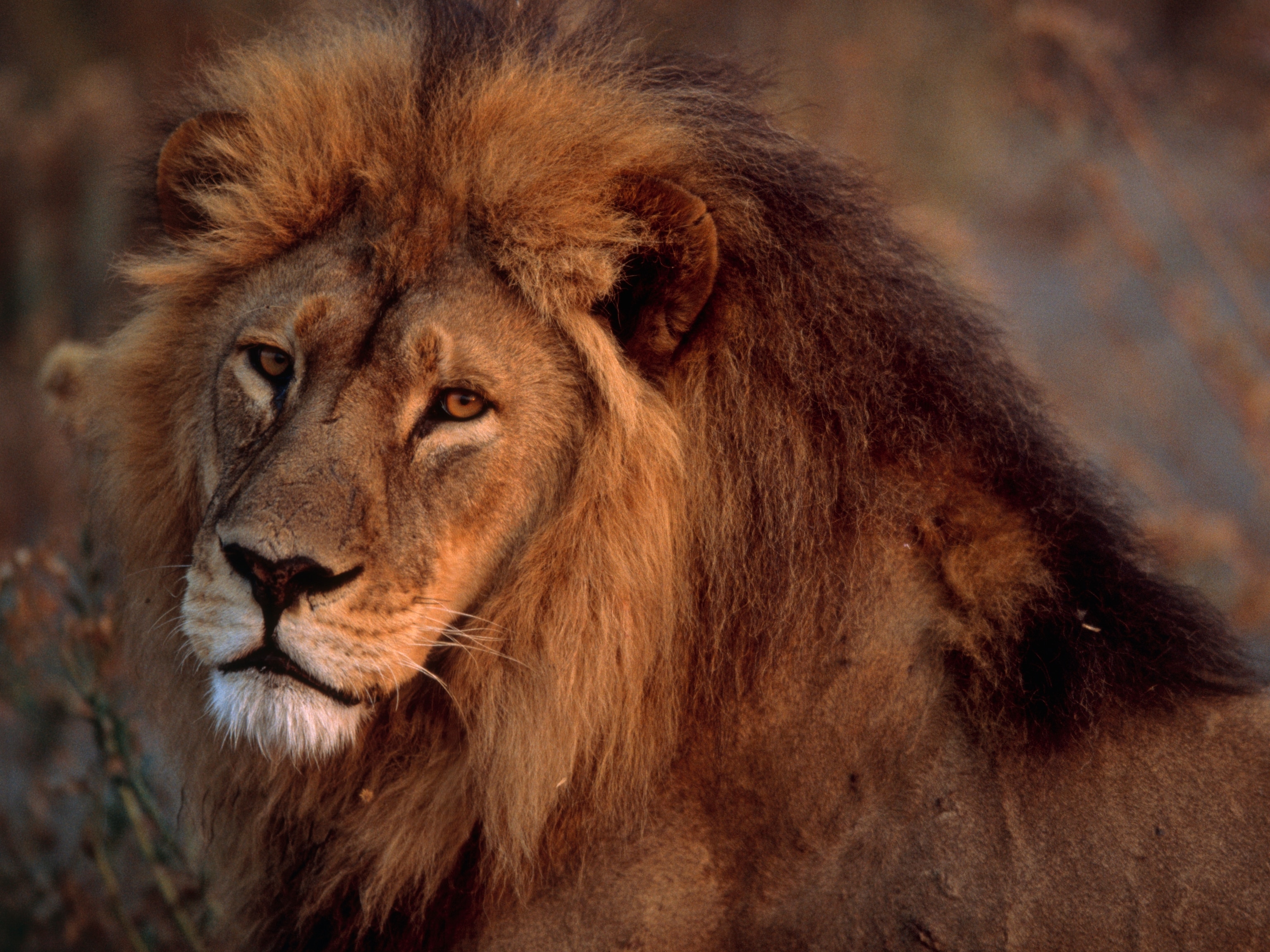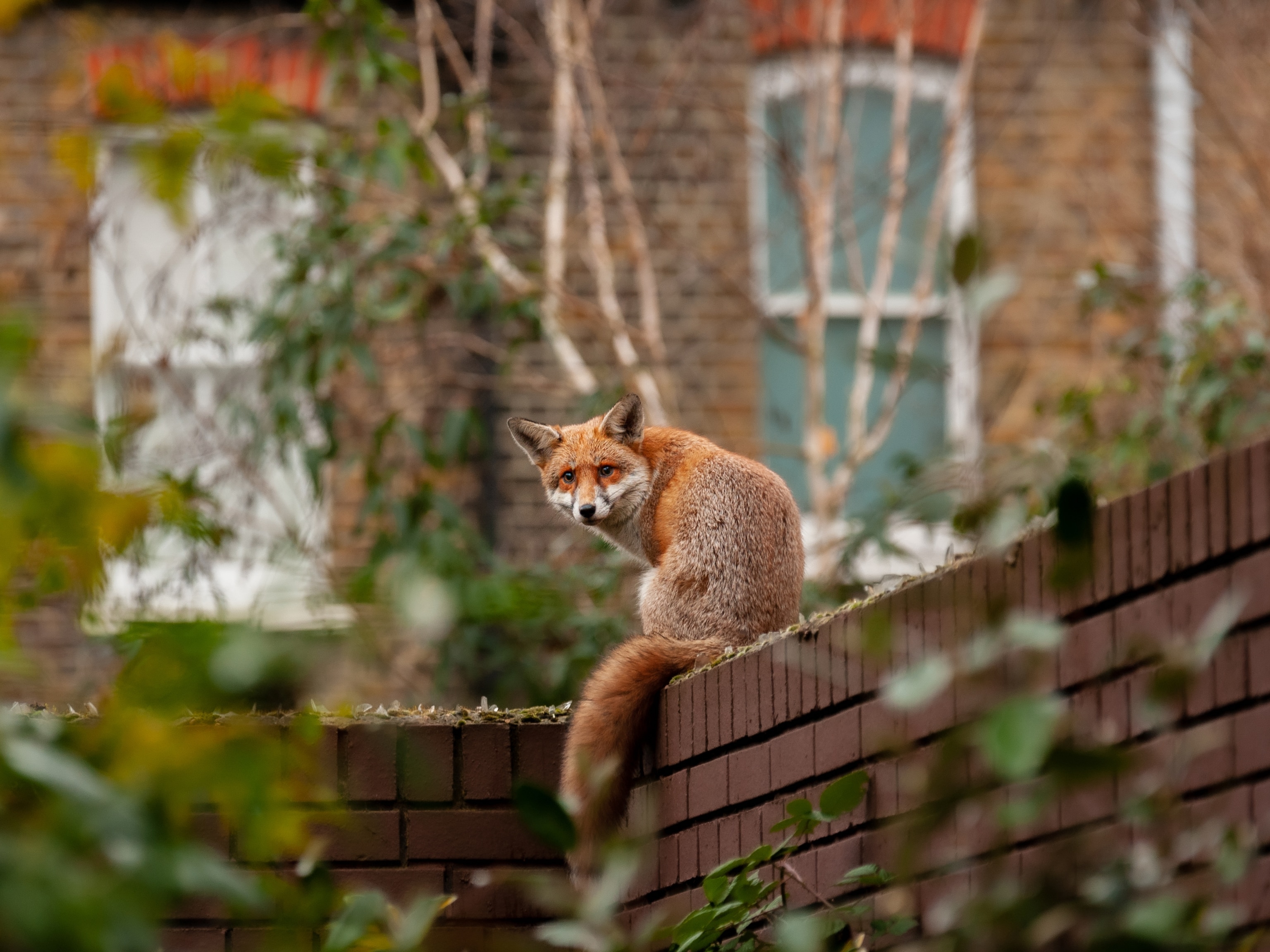
Q&A: Explorer Shivani Bhalla Helps People and Lions Coexist
Bhalla diffuses tensions between herders and predators in Kenya’s Samburu.
Shivani Bhalla believes the way to save Kenya's declining lion population is to work with communities and to diffuse tensions between herders and predators.
Bhalla has just been named to National Geographic's newest class of Emerging Explorers in recognition of her conservation work in her native Kenya. The conservation biologist is the founder and executive director of Ewaso Lions, a Kenya-based nonprofit that promotes coexistence between people and lions. She has also received support from National Geographic's Big Cats Initiative.
There are fewer than 2,000 lions left in Kenya, and they face many threats, including loss of habitat, disruption of their prey, and retaliatory killings by herders. Bhalla and her allies work in the Samburu region of northern Kenya, where lions often come in contact with people. (See "The Serengeti Lion.")
Why have Kenya's lions been declining?
They're running out of space. As [human] population grows there is a lot more pressure put on [lions]. They are having trouble finding wild prey so they go after livestock more often. So local people of course get very angry when they lose their cattle to lions, and some go out and shoot, spear, or poison lions. (See "Living With Lions.")
Aren't lions legally protected in Kenya?
Yes, they are legally protected, but it's hard to enforce and it's difficult for officials to be everywhere. When someone has literally lost everything to lions it's very hard to convince them not to kill lions.
So how do you convince people not to kill lions?
I have a great team of elders, warriors, and women from the community who deal with it every day. When livestock is killed by lions they respond immediately.
The first thing they do is calm the people down and give them a chance to explain what happened. Usually lions kill livestock that have been lost. Then they talk about the importance of lions.
In our areas rhinos were wiped out in the 1980s and the elders remember that and talk about it. They say they don't want their lions to disappear because their kids have never seen a rhino. Then they talk about how to better protect livestock and how reducing conflict will save lions.

The people of the Samburu are nomadic; does that make it harder for them to protect their animals from lions?
Yes, especially at night. If you are moving from place to place you often don't have time to make a good predator-proof boma, or enclosure, and that also makes it easier for livestock to stray out. So we work with them on spending more time on their bomas. We also tell them not to take livestock to areas where there are known predators.
We encourage them to send out older children or warriors, especially, to watch the animals. Warriors aren't scared of anything, they will chase off lions. But young children are, understandably, afraid of lions.
A couple months ago we saw 15 cows being herded by a boy who couldn't have been more than seven. He had a little dog with him. We saw four lions were stalking the cows. So we intervened and drove between the cows and the lions. One of our warriors jumped out and herded the cattle away and another warrior chased the lions away.
What has been the response of the Warrior Watch program, which you launched in January 2010?
It's been really positive. We've grown the number of warriors working in the program to 17. An evaluation study we did recently showed that the community's tolerance to lions has really increased and the warriors feel much more socially empowered in their community.
In addition to helping reduce conflicts between people and lions the warriors collect a lot of data. They have GPS units and they record lots of observations. We're getting hundreds of data points.
When I first suggested the program I asked the warriors what they would like in return for helping save lions. They said they wanted to learn to read and write because they hadn't had the opportunity before. So we started a school on Sunday for them. Now they can all read and write.
Last August we started a new program for women called Momma Simba, which means mother of lions. The women were saying, "Where's our education?" So we started a Saturday school for them. They picked up reading and writing much quicker.
Now we do conservation training with them. We take them on safaris and into the park [Samburu National Reserve]. We did a big pickup of litter with 220 women.
How important has it been to get the children involved through your Lion Kids Camp?
For me it's the most important because kids are the future leaders and future wildlife conservationists, so it's critical to instill interest in wildlife from a very young age. Many of the kids we work with from the Samburu and Turkana have never seen the positive side of having wildlife. But then they see a lion for the first time and that changes everything. I remember the first time I saw a lion, and I'll never forget that. That's why I do what I do.
What will it take to protect Kenya's lion population long term?
A lot more awareness. People need to understand that lions are in trouble. Also a lot more cohesion—people need to work together more. Conservationists, communities, the tourism industry. Let's face it, people are coming to Kenya to see lions, so it's very important to get the tourism industry more involved.
We also need better land-use planning. We need clearly marked settlement locations, we need to stop blocking wildlife corridors, and we need to prevent overgrazing.
What lessons from your work might be applicable to other parts of the world or with other species?
We've been successful by getting local people to protect the lions: It's not me going out to deal with conflict, it's my team. My assistant Jeneria is an incredible young warrior. He goes out to talk to other warriors. The Samburu women we work with talk directly to other women, and that's what makes a difference.
The mistake [conservationists] make is not working through the grassroots.
Do you still believe people and lions can coexist?
Yes. People get to know the lions, they talk about them like they're people. Most of our lions are named by the community. When I see someone on the street they ask me, "How is Magalani? Has she hunted?"
We unfortunately lost a lion last week; she got bitten by a snake. She was called Nabo. I've been getting an incredible number of texts about her. People are talking about her like they've lost a family member.
Does people's newfound interest in lions spill over to other species?
Absolutely. Everyone's getting to know about all the wildlife. We don't just talk about lions; we talk about all the carnivores. In fact hyenas and leopards cause most of the problems.
What are your biggest challenges?
Things change every day in Samburu. It's hard to predict. Security is sometimes an issue.
And there's a lot of development. A new highway is being put in and a lot of animals have been killed on it, including a lion.
What role can tourism play in protecting wildlife?
Samburu is a great place to visit. It's on the main tourist map. We've engaged the tourism industry and have trained 20 guards in the park to know lions. So when they're out in the park with their guests they can say, "This is Nabalo, she's four and has two cubs. She mainly hunts warthog." They can give the conservation message.
The program is called Lion Watch, and it also encourages tourists to upload their photos and get involved. There's a smartphone app we designed so people can collect data.
This interview has been edited and condensed.
Follow Brian Clark Howard on Twitter and Google+.
Get involved with Big Cats.







